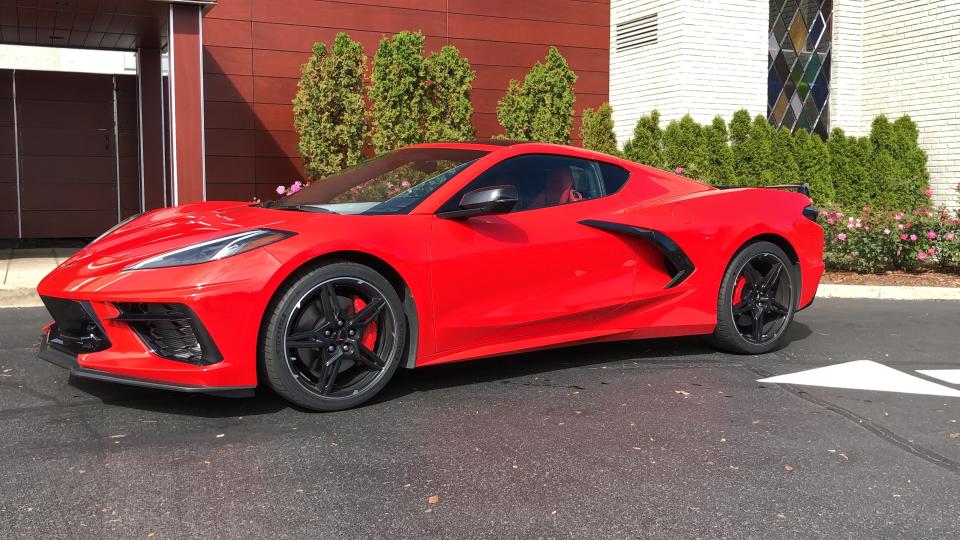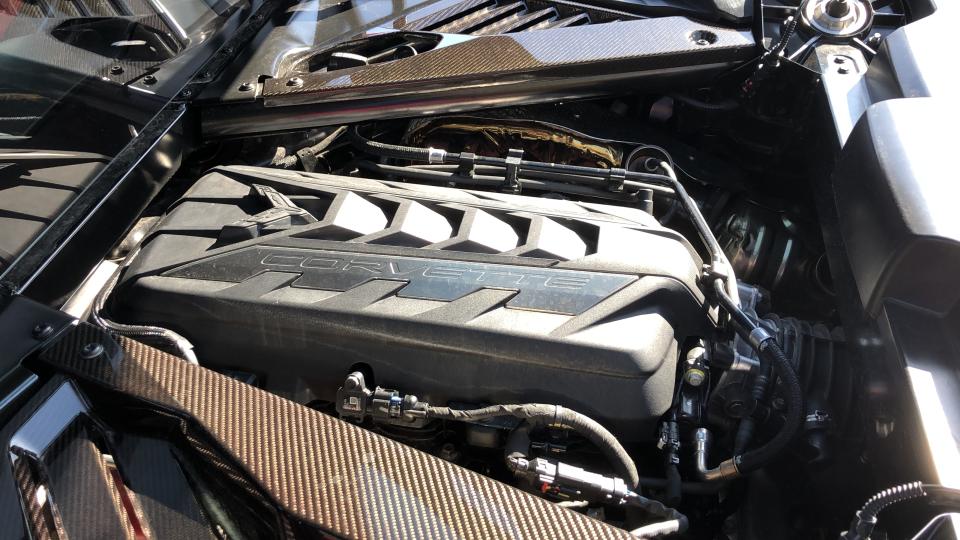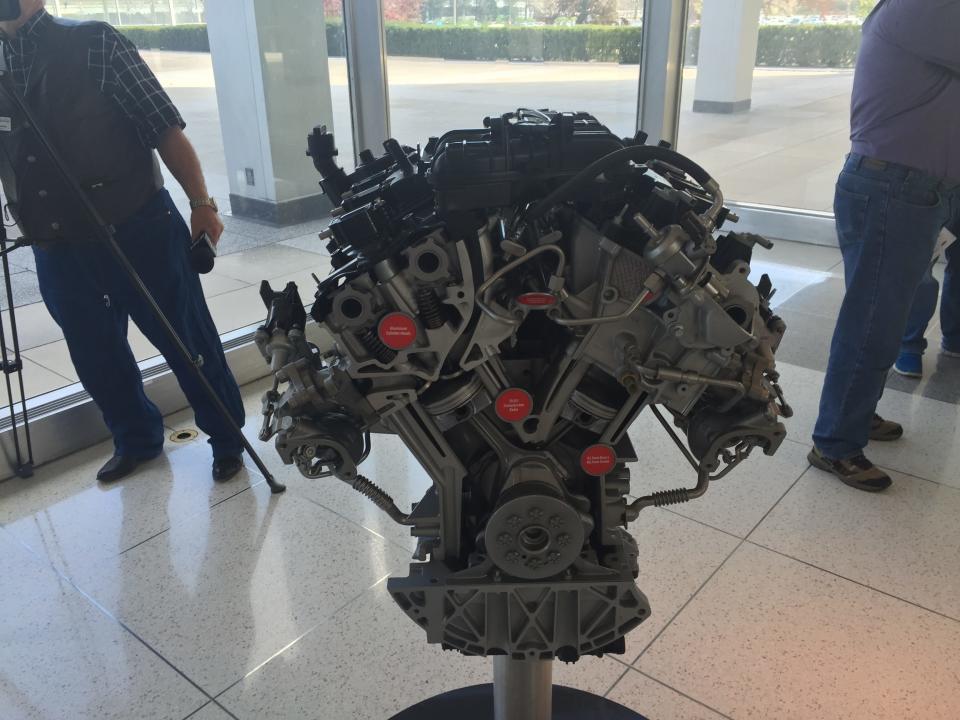How GM's redesigned Corvette gets faster as it gets older
After driving 500 miles, something wonderful happens to the recently redesigned Corvette Stingray.
That's when the vehicle's torque — key to blazing fast starts — increases about 30%.
Basically, the car gets faster and the 8-cylinder engine revs higher, developing its full 495 horsepower and letting Z51 models hit their advertised sub-3-second 0-to-60 mph time.
Thanks, science.
Improved electronics and materials allow new ‘Vettes to protect themselves from the understandable urge to nail the accelerator the first time out of the dealer’s lot, a temptation that used to ruin engines.
“People were really rolling the dice when they opened up the engine too soon 10 or 20 years ago,” said Mike Kociba, assistant chief engineer of General Motors' legendary small-block V8 engines.
That’s because engines need to be broken in before running full out. Failure to do that can reduce power and lead to extra noise, problems that will haunt the vehicle its whole life.
“Breaking in” engines used to be standard operating procedure, but a lot of drivers have never heard of it today. That’s because engines and their controls are hardier than in the past, but failure to break an engine in can still cause problems.

Presto! More power
Old-timers — and people who read owners’ manuals, a Venn diagram that’s probably a circle — will tell you to not to exceed 50-60 mph for the first few hundred miles. That allows oil to work its way into nooks and crannies, and parts to settle firmly into place. That’s how engines were broken in during the auto industry’s early days.
What's coming: Tesla Cybertruck, Ford Bronco, Jeep Wagoneer among 2021's most anticipated new vehicles
Want a new car?: Get ready to pay more than $40,000 as prices continue to rise
That makes no sense to a lot of drivers today, so GM gave the new ‘Vette an electronic guardian angel.
“We do two things for the Corvette,” Kociba said. “First, limit engine speed. For the first 500 miles, the redline is 4,000 rpm.” The redline is literally a red line on the tachometer that shows the top speed at which an engine can safely be run.
When the ‘Vette hits 500 miles, the odometer talks to the tachometer and the redline moves to 6,600 rpm, the speed at which the engine can generate maximum power. Presto, more power.
Driving too fast and hard before oil has coated all the parts isn’t just a threat to engines. It can also damage gears and pinions, making the rear end noisy.
To avoid that, the ‘Vette limits torque to about 330 pound-feet when the car is in first or second gear. At 500 miles, the limit goes away, but the extra power isn’t available until the next time the car has been turned off and started, Kociba said. That’s because getting an extra 140 pound-feet of torque with no warning from one turn to another “could be unsettling,” he said with typical engineering understatement.
What to do with your new car
GM recommends owners observe the 500-mile break-in period with all new vehicles. Only the Corvette has the electronic fail-safe because it’s fastest and most powerful and has GM’s latest electronics.
Ford’s engine controls protect owners from brief bouts of over-enthusiasm, powertrain engineering manager Joel Beltramo said.

“The manufacturing and tolerances of our engines are now so good, and the software controls that monitor for temperature increases are so effective that even if you briefly had to go wide-open throttle 10 minutes after leaving a dealer, the engine will protect itself through cooling so you won’t hurt the engine’s life.
“Should you do that all the time before the engine is fully broken in? No. That’s why we recommend owners refer to the owner’s manual in their vehicle.”

Many automakers still recommend do-it-yourself break-ins. Ram 1500 pickup’s Hemi V8s come with these instructions:
“Drive moderately during the first 300 miles (500 km). After the initial 60 miles (100 km), speeds up to 50 or 55 mph (80 or 90 km/h) are desirable. While cruising, brief full-throttle acceleration within the limits of local traffic laws contributes to a good break-in. Wide-open throttle acceleration in low gear can be detrimental and should be avoided.”
The moral of the story? Read your owner’s manual. Or join the 21st century and Google “engine break-in (model year) (vehicle name).”
Follow Detroit Free Press auto critic Mark Phelan on Twitter @mark_phelan.
This article originally appeared on Detroit Free Press: Corvette Stingray engineered by GM to get faster as it gets older
